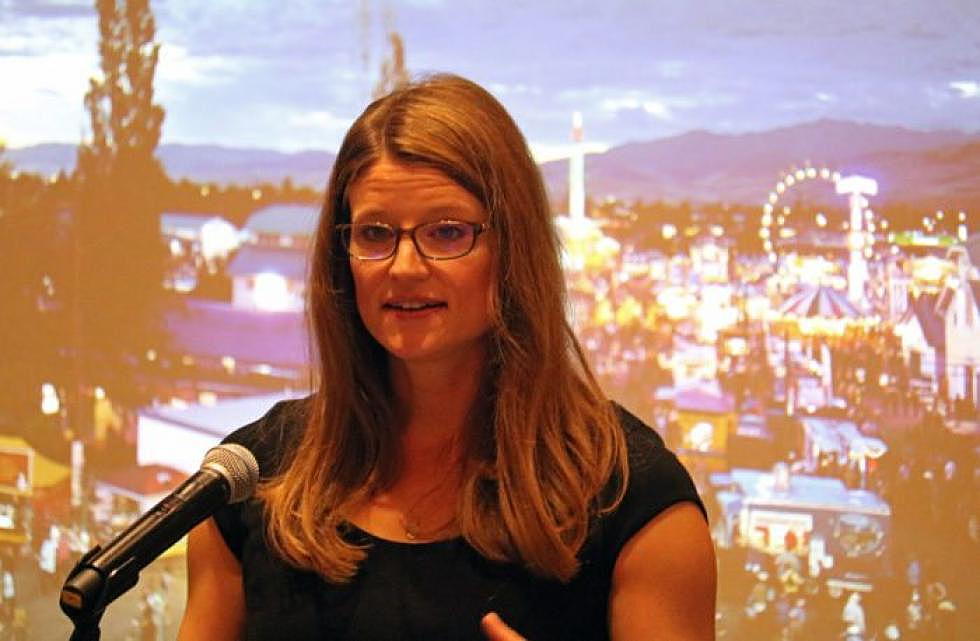
Fairgrounds to get $20M makeover in early redevelopment phase
Over the next 10 years, the Missoula County Fairgrounds will undergo a slow transformation under the guidance of a multimillion-dollar redevelopment plan that calls for maintaining the property's historic charm while expanding its use.
From a new commercial livestock center to three new skating rinks, open space and connective trails, the future fairgrounds could again find itself as an agricultural hub within an ever-growing metropolitan region.
“The community is ready and excited to see this project come to fruition,” said Emily Bentley, the fairgrounds' director of development. “The feedback we've gotten from the community about these changes has been overwhelmingly positive.”
Over the next year, the county intends to finalize the design details before embarking on its goal to realize the fairgrounds master plan. Adopted last year, the plan represents years of work, studies and outreach to pin down the community's vision for the property, which sits surrounded by city land.
Among other things, the plan calls for three new hockey rinks, a 3,000-seat rodeo arena and a commercial livestock center. A learning center with a demonstration kitchen is planned, along with an exhibition building and historic preservation work.
“We're renovating five historic buildings to match the original 1915 Commercial Building,” Bentley said. “We'll be doing a technical analysis on the fairgrounds' photography collection to discover what the original color and textures were on these buildings.”
Bentley, who outlined the plan during Monday's monthly City Club Missoula meeting, took the job as the fairgrounds' new development director in January. Since that time, she has met with numerous user groups and detailed the property's redevelopment plan, one that will cost more than $25 million over 10 years.
Phase 1 of that effort will start as early as next year and include needed utility upgrades and renovation to several historic buildings. It will also include construction of a new maintenance shop, the learning center, and perimeter landscaping and fencing.
The initial phase would also see improvements to the carnival grounds, the addition of 10 acres of open space and 3,000 feet of new pedestrian trails connecting the property with the surrounding Midtown district.
Dirt work for the livestock and rodeo arena would also begin.
Bentley said the initial phase, estimated at $20 million, would come largely from the county, which would prioritize the project during its budgeting process. Commissioners would also leverage mills dedicated to the effort.
“This would contribute $14 million of $20 million towards Phase 1,” Bentley said. “This money would be leveraged to raise additional public and private funds to close the remaining $6 million gap for Phase 1.”
Phase 2 would likely start in 2020 and see the completion of the remaining open space and pedestrian trails. It would also include construction of three new ice rinks, the livestock center and a rodeo arena.
The leading user groups, including agricultural clubs and various ice groups, will need to raise funding to complete much of the work.
“Most of the funding for this phase would need to be raised privately, although the county is hoping to provide a match,” Bentley said. “If we can raise enough in Phase 1 to roll over some of the mills allocated to the fairgrounds, it could help these stakeholders build their projects.”
Phase 3, which includes an exhibition center and a full build out of the livestock center, currently has no identified funding. Bentley said those projects could be years away, and funding may be found by that time.
“We have to make certain that products are selected, open space is landscaped, trails are connected and buildings are situated to meet the mission of the fairgrounds, the stakeholders and the adjacent neighborhood,” Bentley said. “When it comes time to build each individual product, there's surety that with so many varying user groups, the entire 46 acres are integrated and attractive.”
Bentley said the redevelopment plan does more than revitalize the fairgrounds. It also sets to the tone for redevelopment across Missoula's growing Midtown district. The city recently completed a study for the district and will apply for a federal grant next year to begin work.
Among other things, the Midtown vision calls for more place-making and cultural amenities, and better bike and pedestrian connectivity with surrounding neighborhoods. It also calls for higher-density development that aids in mass transit and creates a new urban hub.
“Another reason why we need to redevelop the fairgrounds is to encourage redevelopment in Midtown,” Bentley said. “All of it can be catalyzed by the fairgrounds.”
Bentley believes redevelopment of the Midtown district and the fairgrounds can evolve together.
“The vision is for the (fairgrounds) to be distinct, rural and integrated with the urban core,” Bentley said. “We feel confident we'll reach more people and have a greater impact than ever before.”
Contact reporter Martin Kidston at info@missoulacurrent.com
